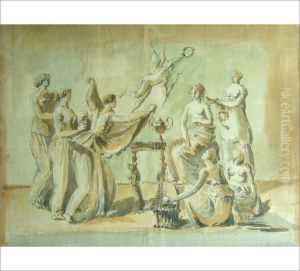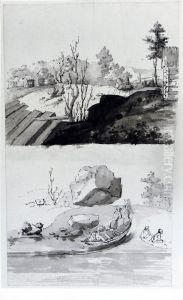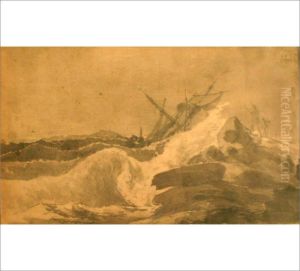Augustin Ehrensvard Paintings
Augustin Ehrensvard, born on September 25, 1710, in Vyborg, then part of the Swedish Empire (now in Russia), was a notable military officer, architect, and artist whose influence extended into the realms of military fortification design and cultural heritage in Sweden. Ehrensvard's career was deeply intertwined with the military and political contexts of his time, serving under the Swedish crown during a period marked by significant military and territorial challenges.
Ehrensvard's most enduring legacy is his work on the fortress of Suomenlinna (Sveaborg in Swedish), located at the entrance to Helsinki Harbor in Finland. Commissioned by King Frederick I of Sweden in the mid-18th century, Suomenlinna was conceived as a maritime fortress and naval base to protect against Russian expansionism. Ehrensvard's innovative approach to fortress design, emphasizing low-profile fortifications and the strategic use of the natural landscape, marked a departure from traditional fortress architecture and is considered a masterpiece of military engineering of the time.
Beyond his military and architectural accomplishments, Ehrensvard also made contributions to the arts and culture. He was an accomplished artist, known for his sketches and watercolors, which often depicted military subjects and landscapes. His artistic work provides valuable insights into the 18th-century Nordic landscape and military life.
Ehrensvard's contributions were recognized during his lifetime, and he was elevated to the nobility for his services. He served as the commandant of Suomenlinna until his death on October 4, 1772, and was buried on the island, where his tomb remains a site of historical significance. Today, Suomenlinna is a UNESCO World Heritage Site, serving as a testament to Ehrensvard's vision and enduring influence on military architecture and the cultural heritage of Finland and Sweden.


